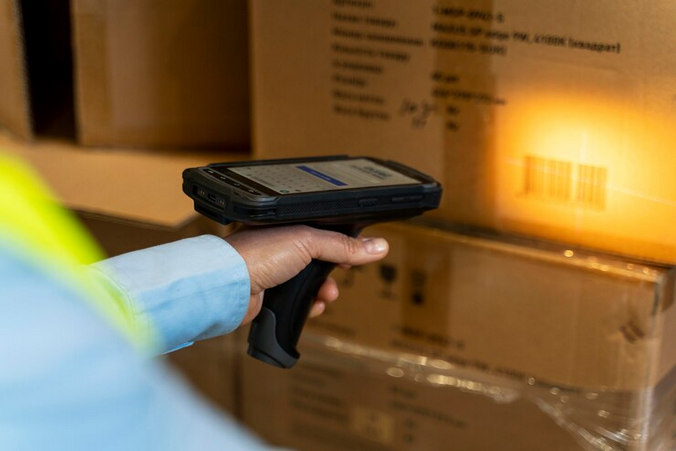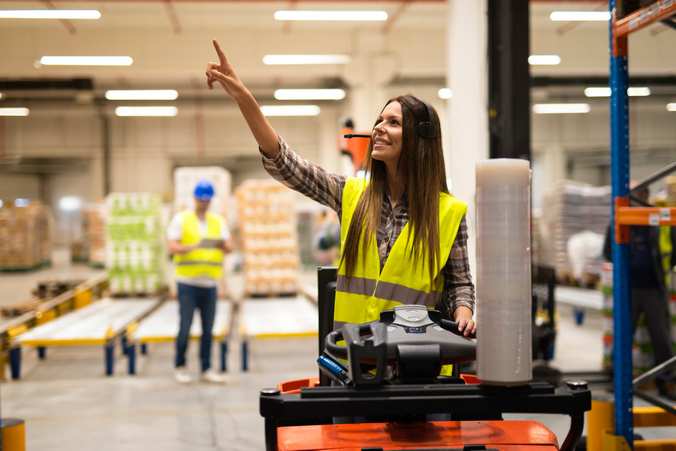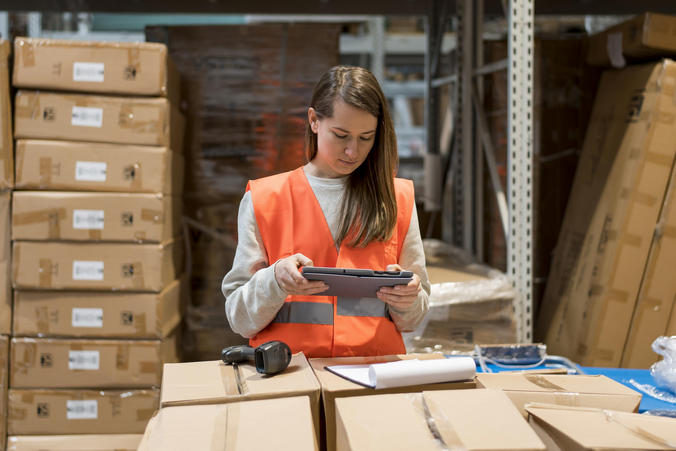In the world of logistics, efficiency and control are crucial to maintaining a smooth operation.…

Boost supply chain traceability with best practices
Reading Time: 6 minutes
Could your company track the journey of an electronic component from the manufacturing plant to the exact moment it reaches the end customer? Think of a microchip: its path involves multiple production facilities, assembly centers, intermediate warehouses, and international routes before reaching an automotive or mobile device manufacturer.
In a landscape where logistical disruptions can cause million-dollar losses, customers demand transparency, and regulations impose strict controls, precise monitoring of every stage of the chain has become a strategic element for operational continuity.
Today, we’ll explore the scope of supply chain traceability, the benefits it offers, the challenges it presents, and the recommended practices for successfully implementing it in your industry.
📍 What is supply chain traceability and why is it so crucial?
Supply chain traceability is more than tracking a product—it is the ability to reconstruct its entire history, from raw material at its source to the moment it reaches the end customer.
There are two main types:
- Internal traceability: tracking products within the company, from receipt to dispatch.
- External traceability: tracking involving suppliers, distributors, and customers, ensuring visibility across the entire logistics network.
The importance of supply chain visibility is undeniable. Globalization has extended supply chains, regulations have become stricter, and consumers demand transparency regarding the origin, quality, and impact of the goods they purchase. Having a robust logistics control system is no longer a bonus—it is a key competitive advantage for any company aiming to survive and thrive in today’s market.
✅ Key Benefits of Traceability in Logistics
Implementing a robust tracking and recording system within the supply chain generates positive impacts both on operations and brand perception. Key benefits include:
📊 Greater control and visibility: The ability to know in real time the location and status of every product, from origin to final destination, enables rapid responses to unforeseen events, route optimization, and reduced losses from misplacement or damage.
📦 Improved inventory management: Having up-to-date information on stock levels facilitates production planning and replenishment, avoiding both overstocking and stockouts. This translates into less waste and more efficient resource use.
📜 Regulatory compliance: In highly regulated sectors such as food or pharmaceuticals, having precise, auditable records ensures compliance with national and international standards, minimizing the risk of fines or trade restrictions.
🤝 Customer trust: Providing transparent information about a product’s origin and journey strengthens corporate reputation, building credibility and loyalty.
⚡ Rapid incident response: In cases of defects, contamination, or quality issues, traceability allows quick identification and removal of affected lots from the market, preventing greater damage to the company’s image and reducing financial impact.
🔧 Essential Elements for Effective Traceability
For a logistics control system to operate optimally, it must integrate various technological and organizational components to ensure information accuracy and continuity:
💻 Technology and management systems. Platforms such as ERP (Enterprise Resource Planning), WMS (Warehouse Management System), and TMS (Transportation Management System) are essential for centralizing and processing real-time data. These tools allow information to flow without interruption and help decision-makers act based on accurate data.
🏷 Product identification. Coding through barcodes, QR codes, or RFID (Radio Frequency Identification) assigns a unique identifier to each item, lot, or pallet, ensuring accurate tracking and reducing the likelihood of manual errors.
🌍 Data integration among stakeholders. It’s not enough for a company to have internal control—systems from all trading partners (suppliers, carriers, distributors) must communicate to share real-time data and maintain traceability throughout the entire chain.
⚠ Common Challenges in Implementing Traceability
While the benefits are clear, implementing a robust supply chain visibility system presents challenges that must be addressed:
💰 Initial implementation costs: Investing in software, hardware, infrastructure, and training can be significant. However, in the long run, the savings from optimization and loss prevention often far outweigh the initial expense.
🔗 Technological integration: Working with multiple logistics partners, each with its own platforms and processes, makes achieving full interoperability complex. This requires prior agreements, common standards, and sometimes custom interface development.
👨🏫 Staff training: Success depends not only on technology but on correct usage. All personnel involved must understand procedures, know how to operate the tools, and grasp the importance of accurate data entry.
🏭 Industries Where Traceability Is Essential
In a globalized environment, supply chain traceability is not optional—it is a critical requirement for ensuring quality, safety, and transparency. While it adds value in any sector, its absence in certain industries could lead to severe economic, legal, and reputational consequences:
- 🍏 Food industry: Traceability ensures knowledge of each ingredient’s origin, transportation, and storage conditions, enabling a swift response to contamination or safety breaches. For example, if a pathogen is found in a fresh product, traceability allows immediate identification and recall of affected lots, protecting consumers.
- 💊 Pharmaceuticals: Patient safety depends on strict control over the production and distribution of medicines. A robust control system must verify product authenticity, prevent counterfeiting, and ensure compliance with regulations like the EU Falsified Medicines Directive or the U.S. DSCSA.
- 🚗 Automotive: In a sector where quality and precision are non-negotiable, traceability allows tracking each part from manufacturing to installation in a vehicle. This is crucial for warranty management, defect identification, and executing targeted recalls without halting full production.
- 👗 Textile and fashion: In a market increasingly focused on sustainability, traceability helps verify material origin, production conditions, and compliance with ethical standards.
💡 Best Practices to Strengthen Traceability in Logistics
Achieving a robust system goes beyond implementing technology—it requires an integrated strategy that covers processes, people, and collaboration across all chain links. The most effective practices include:
📋 Comprehensive Needs Assessment
Before launching any tracking initiative, conduct a thorough analysis to understand operational specifics:
- Identify points in the chain where visibility is critical for quality control and efficiency.
- Analyze current capabilities and detect gaps that could compromise traceability.
- Evaluate every stage, from procurement to delivery, to pinpoint risks or insufficient visibility.
- Define clear objectives—whether to optimize response times, improve inventory accuracy, or meet regulatory standards.
- Factor in customer expectations and industry requirements.
This assessment ensures solutions match actual business needs, helps prioritize actions, and sets clear metrics such as lot location time or incident reduction rates.
📈 Phased Implementation Strategy
Rolling out a full traceability system is a major challenge in terms of resources, time, and coordination. A gradual approach helps minimize risks:
- Pilot program. Start with a small product line or area to test performance and detect adjustments.
- Progressive expansión. Gradually add more processes, facilities, or partners, applying lessons learned.
- Full integration. Extend the system to the entire supply chain, including suppliers, carriers, and distributors.
- Continuous improvement. Schedule regular reviews to adapt to new technologies, regulations, or operational changes.
🖥 Invest in the Right Technology
There is no one-size-fits-all solution. The right system depends on the industry, operational volume, and budget.
- High-volume operations may benefit from a WMS or an ERP with a traceability module for centralized, real-time updates.
- Multi-partner supply chains can leverage cloud-based platforms with shared access to improve communication and reduce errors.
Strategic investment in tools that integrate with existing systems avoids duplication and maximizes ROI.
🤝 Strategic Selection of Technology Partners
Choosing the right providers is as important as the technology itself. Consider:
- Proven industry experience.
- Integration capabilities with current systems.
- Scalability to grow with your business.
- Long-term support and maintenance.
- Commitment to innovation and adaptation to emerging technologies.
🔄 Collaborate with Supply Chain Partners
Traceability is ineffective if each actor works in isolation. Establish agreements with suppliers, carriers, distributors, and customers to share standardized, real-time data. Promoting interoperability between different systems reduces delays, prevents manual entry, and minimizes transcription errors.
📑 Establish Standardized Protocols
Clear processes for data recording, storage, and access are essential. Define:
- What information to record (lot, date, supplier, location, status).
- Update frequency.
- Responsible parties for each stage.
- Incident documentation procedures.
🎯 Ongoing Staff Training
A traceability system is only as effective as its users. Training should be continuous and adapt to technological and regulatory changes. Foster a culture of traceability so every team member understands its relevance and actively contributes to transparency and safety.
🚀 Traceability as a Growth Driver with AI Río Bravo
Supply chain traceability is a strategic investment that drives efficiency, trust, and business competitiveness. In a market where transparency is a core value, having a robust system is essential for business continuity.
If your organization has yet to adopt a strong tracking and control system, now is the time to act. AI Río Bravo offers integrated solutions combining cutting-edge technology, expert consulting, and customized processes to help you achieve complete traceability at every link in your chain. Our approach ensures real-time visibility, interoperability with your partners, and compliance with the most demanding regulations, both in Mexico and abroad.
The future of your competitiveness starts today. Take the step toward a more transparent and efficient supply chain with the support of AI Río Bravo.





